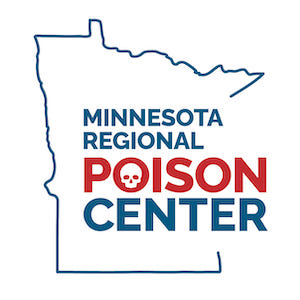News Alerts
NEWS RELEASE
7/18/2024
Wet, warm weather increases wild mushroom growth, poisoning risk
With this summer’s unusually wet and warm weather, the Minnesota Regional Poison Center has been receiving an increase in calls related to wild mushroom exposures.
How do you tell the difference between an edible mushroom and a poisonous one? In most cases, you can’t! Many wild mushrooms may look like the edible or cultivated mushrooms available in the grocery store and may be difficult to correctly identify in the wild – even for experienced foragers. Mushroom features that help identify an edible mushroom in one region of the United States (or another country) are not reliable for identifying edible mushrooms in another area.
Wild mushroom safety tips:
· Never pick and eat a wild mushroom unless it has been identified by a specially trained mushroom expert. The only safe mushrooms are ones that can be purchased in the grocery store.
· Supervise children while playing in the yard to minimize the chance of accidental ingestions.
· Teach children to ask before eating something they find outdoors.
· Cooking a poisonous mushroom does not make it safe to eat.
Symptoms from eating a poisonous mushroom may not appear for several hours to days. Potential symptoms of mushroom poisoning could include stomach cramps, vomiting, diarrhea and headache. Confusion and seizures can also occur. Some poisonous mushrooms in small amounts can even cause organ failure or death.
If you suspect someone has eaten a wild mushroom, call the Minnesota Regional Poison Center immediately at 1-800-222-1222. Our poison specialists are here to help you. They work with mushroom identification experts called mycologists to determine if a mushroom is poisonous.
Calling 1-800-222-1222 is free and confidential and is available 24/7 for all Minnesotans. Visit www.mnpoison.org for prevention tips, educational resources, and downloadable materials.
# # #
The Minnesota Regional Poison Center is designated by the Minnesota Department of Health to provide poison information and consultative services to the entire State of Minnesota. For more information, visit www.mnpoison.org.
Contact: Samantha Lee, PharmD, DABAT, BCPS
Director, Minnesota Regional Poison Center
[email protected]
7/20/2023
Rise in children hospitalized for fentanyl exposures reported by Minnesota Poison Control System
The Minnesota Poison Control System is reporting an alarming rise in children exposed to opioids, such as fentanyl, in the state. Illegally manufactured fentanyl is often added to other illicit substances – including other opioids – making it difficult for people who use drugs to know what they are ingesting, and to what they may be exposing their children.
“Since 2022, the Minnesota Poison Control System has been contacted about 66 children under the age of 3, including those just learning to cruise or that put their hands in their mouths, who have presented to Minnesota hospitals due to exposure to opioids,” explains Dr. Travis Olives, associate medical director for the Minnesota Poison Control System. “All required medical care, and a wide range of symptoms and severity of illness were reported to us. But there are likely many more that were not reported to the Poison Control System.”
Caregivers throughout the state are concerned about these disheartening numbers and understand that no one wants a child to be exposed to a life-threatening substance. They also know that these incidents are probably not intentional. Regardless of the cause of the poisoning, naloxone and rescue breathing can be lifesaving, lifechanging, and intentional.
“It’s essential to keep opioids and other harmful substances away from children and to keep children away from areas and surfaces where they are used,” says Dr. Olives. “Even better, consider getting help for addiction – and do not have or use these substances in locations where they may be accidentally ingested by little ones.”
Most exposures occur when children come into contact with fentanyl in the home.
“It’s essential to thoroughly clean any spaces and places where fentanyl or other opioids may be within reach of an infant or toddler – and not leave drugs or other potentially dangerous items within reach.”
Symptoms of opioid exposure include sleepiness or decreased alertness; unresponsiveness, slow, shallow, or altogether absent breathing; vomiting, which may be inhaled if a child is too sleepy to prevent this, pallor or blue-shaded skin (a sign of inadequate breathing); small pupils. Children should always be under the care of someone who is safe and sober in case of any type of emergency.
“If you suspect that a child has been exposed to fentanyl or any other opioids and exhibits any of these symptoms, call 911 and seek medical attention immediately,” says Dr. Olives.
# # #
The Minnesota Poison Control Center provides exposure management with nationally Certified Specialists in Poison Information to provide poison exposure assessment and management techniques to the general public and health care professionals across the state. The services provided through the national toll-free telephone number (1-800-222-1222) accessible by both voice and TTY and is available 24 hours a day, 365 days a year.
Contact: Samantha Lee, PharmD, DABAT, BCPS
Director, Minnesota Poison Control System
[email protected]
